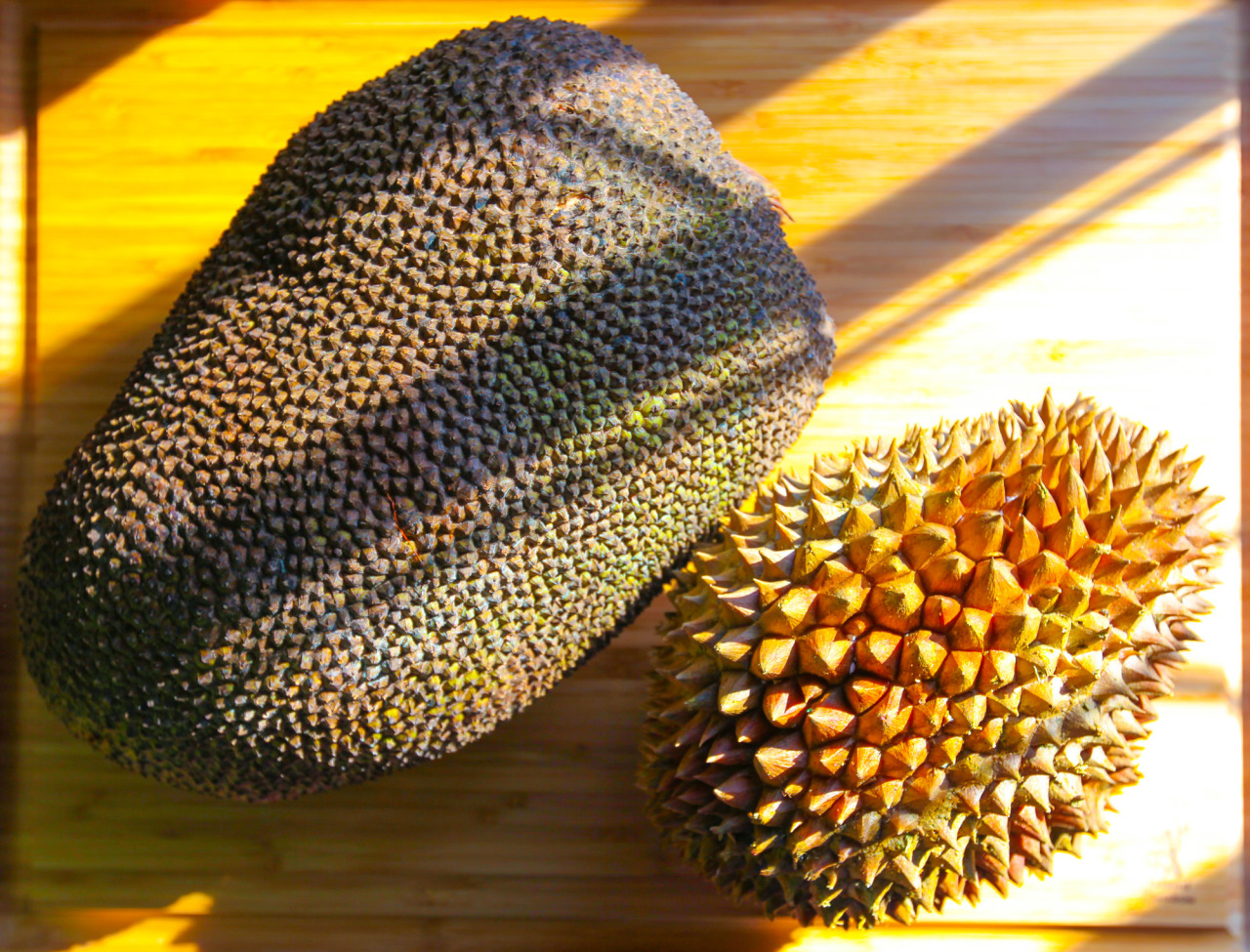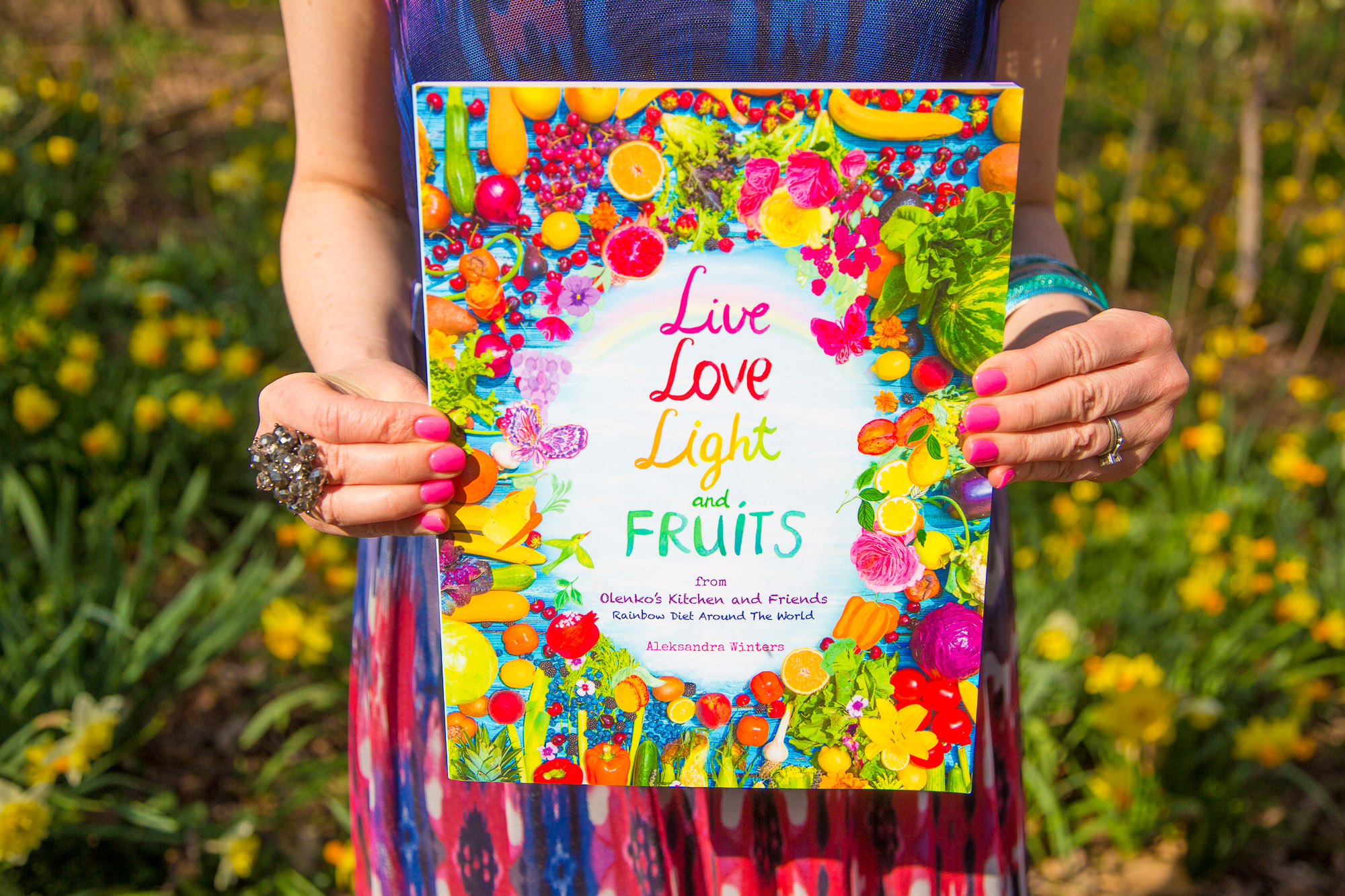
My Trip to Jamaica and JackFruit Tree
Recently I have visited Jamaica and I had a chance to go on amazing Sun Valley Working Plantation Eco Tour. This plantations has been around for over 250 years and now is owned by Nolly and Lorna Binns with verity of hundred of exotic fruits, plans and spices like vanilla beans, nutmeg, coconut trees and banana trees. I was able to sample variety of fruits straight from a tree ( like raw cacao beans, so yummy or bread fruit ) and I have learned about the therapeutic and medicinal properties of trees, herbs and spices that I have seen there. If you ever in Jamaica you should go to the Sun Valley Plantation. Telephone (876)771-2517 Daily Tours starts at 9:00am
My favorite was to see and eat Jackfruit. Jackfruit is the biggest fruit in the world and the skin looks like a skin of a dinosaur. First time I have tried Jack fruit was when I went to Thailand 6 years ago and it was a love from the first sight. I was so happy to go to the plantation and see the real Jackfrui tree and learn more about it.
The jackfruit (Artocarpus heterophyllus, also known as jack tree, jakfruit, or sometimes simply jack or jak)[6] is a species of tree in the Artocarpus genus of the mulberry family (Moraceae). It is native to parts of South andSoutheast Asia, and is believed to have originated in the southwestern rain forests of India, in present-dayKerala,TamilNadu, coastal Karnataka and Maharashtra.[7] The jackfruit tree is well suited to tropical lowlands, and its fruit is the largest tree-borne fruit,[8] reaching as much as 80 pounds (36 kg) in weight, 36 inches (90 cm) in length, and 20 inches (50 cm) in diameter.[9]
The jackfruit tree is a widely cultivated and popular food item in tropical regions of India, Bangladesh, Nepal, Sri Lanka, Cambodia, Vietnam, Thailand, Malaysia, Indonesia, and the Philippines. Jackfruit is also found across Africa(e.g., in Cameroon, Uganda, Tanzania, Madagascar, and Mauritius), as well as throughout Brazil and in Caribbean nations such as Jamaica. Jackfruit is the national fruit of Bangladesh.
The flesh of the jackfruit is starchy and fibrous and is a source of dietary fiber. The flavor is comparable to a combination of apple, pineapple, mango and banana.[21] Varieties are distinguished according to characteristics of the fruit’s flesh. In Brazil, three varieties are recognized: jaca-dura, or the “hard” variety, which has a firm flesh and the largest fruits that can weigh between 15 and 40 kilograms each, jaca-mole, or the “soft” variety, which bears smaller fruits with a softer and sweeter flesh, and jaca-manteiga, or the “butter” variety, which bears sweet fruits whose flesh has a consistency intermediate between the “hard” and “soft” varieties.[22] In Indochina, there are 2 varieties, being the “hard” version (more crunchy, drier and less sweet but fleshier), and the “soft” version (more soft, moister, much sweeter with a darker gold-color flesh than the hard variety).
In Kerala, two varieties of jackfruit predominate: varikka (വരിക്ക) and koozha (കൂഴ). Varikka has a slightly hard inner flesh when ripe, while the inner flesh of the ripe koozha fruit is very soft and almost dissolving. A sweet preparation called chakka varattiyathu (jackfruit jam) is made by seasoning pieces of varikka fruit flesh in jaggery, which can be preserved and used for many months. Huge jackfruits up to four feet in length with a corresponding girth are sometimes seen in Kerala.[citation needed]
In West Bengal the two varieties are called khaja kathal and moja kathal. The fruits are either eaten alone or as a side to rice / roti / chira / muri. Sometimes the juice is extracted and either drunk straight or as a side with muri. The extract is sometimes condensed into rubbery delectables and eaten as candies. The seeds are either boiled or roasted and eaten with salt and hot chillies. They are also used to make spicy side-dishes with rice or roti.
In Mangalore, Karnataka, the varieties are called bakke and imba. The pulp of the imba jackfruit is ground and made into a paste, then spread over a mat and allowed to dry in the sun to create a natural chewy candy.
The young fruit is called polos in Sri Lanka and idichakka or idianchakka in Kerala.
In Indochina, jackfruit is a frequent ingredient in sweets and desserts. In Vietnam, jackfruit is used to make jackfruit Chè (chè is a sweet dessert soup, similar to the Chinese derivative, bubur chacha). The Vietnamese also use jackfruit puree as part of pastry fillings, or as a topping on Xôi ngọt (sweet version of sticky rice portions).
Ripe jackfruit is naturally sweet with subtle flavoring. It can be used to make a variety of dishes, including custards, cakes, halo-halo and more. In India, when the Jackfruit is in season, an ice cream chain store called “Naturals” carries Jackfruit flavored ice cream.
Ripe jackfruit arils are sometimes seeded, fried or freeze-dried and sold as jackfruit chips.
The seeds from ripe fruits are edible, are said to have a milky, sweet taste, and may be boiled, baked or roasted. When roasted the flavor of the seeds is comparable to chestnuts. Seeds are used as snacks either by boiling or fire roasted, also used to make desserts. For making the traditional breakfast dish in southern India: idlis, the fruit is used along with rice as an ingredient and jackfruit leaves are used as a wrapping for steaming. Jackfruit dosas can be prepared by grinding jackfruit flesh along with the batter.
Culinary uses for unripe fruit;
Because unripe jackfruit has a meat-like taste, it is used in curry dishes with spices, in Bihar,Jharkhand, Sri Lankan, Andhran, eastern-Indian (Bengali) and (Odisha) and Keralan cuisine. The skin of unripe jackfruit must be peeled first, then the remaining whole jackfruit can be chopped into edible portions and cooked before serving. Young jackfruit has a mild flavor and distinctive meat-like texture and is compared to poultry. Meatless sandwiches have been suggested and are popular with both vegetarian and non-vegetarian populations.
Unripe jackfruit is widely known as Panasa Katha in Odisha.The cuisines of India, Nepal, Bangladesh, Sri Lanka, Indonesia, Cambodia,Thailand and Vietnam use cooked young jackfruit.[21] In Indonesia, young jackfruit is cooked with coconut milk as gudeg. In many cultures, jackfruit is boiled and used in curries as a staple food. In northern Thailand, the boiled young jackfruit is used in the Thai salad called tam kanun. In West Bengal the unripe green jackfruit called “aechor/ichor” is used as a vegetable to make various spicy curries, side-dishes and as fillings for cutlets & chops. It is especially sought after by vegetarians who substitute this for meat and hence is nicknamed as gacch-patha (tree-mutton). In the Philippines, it is cooked with coconut milk (ginataang langka). In southern India unripe Jackfruit slices are deep fried to make chips.
“Researchers say jackfruit — a large ungainly fruit grown across south and south-east Asia — could be a replacement for wheat, corn and other staple crops under threat from climate change.
The World Bank and United Nations warned recently that rising temperatures and unpredictable rainfall had already reduced yields of wheat and corn, and could lead to food wars within the decade.
Now researchers say jackfruit could help provide the solution.
Jackfruit is the largest known tree-borne fruit. Even a small jackfruit weighs in at 5-7 kg, and farmers have recorded specimens of more than 45kg.
“It’s a miracle. It can provide so many nutrients and calories – everything,” said Shyamala Reddy, a biotechnology researcher at the University of Agriculture Sciences in Bangalore. “If you just eat 10 or 12 bulbs of this fruit, you don’t need food for another half a day.”
Efforts in India to exploit the fruit’s potential coincides with a global push to expand food production, especially in developing countries which are expected to face growing challenges to feed their people in the coming decades.
Jackfruit can fill the gap on a number of counts, said Danielle Nierenberg, president of Food Tank, which works on sustainable agriculture.
“It is easy to grow. It survives pests and diseases and high temperatures. It is drought-resistant,” she said. “It achieves what farmers need in food production when facing a lot of challenges under climate change.”
The fruit is rich in potassium, calcium, and iron, said Ms. Reddy, making it more nutritious than current starchy staples.
Sri Lanka and Vietnam have established jackfruit industries but the fruit remains a hard sell in much of India. Although the fruit was seen as an important staple 40 or 50 years ago, it is now derided as a poor man’s fruit, said Shree Padre, a jackfruit farmer from Karnataka.
Only one or two commercial-scale jackfruit plantations are in current operation.
The down-market reputation is unwarranted, said Nyree Zyrega, a researcher on plant biology at the Chicago Botanic Garden, who has studied jackfruit in Bangladesh.
In addition to its high nutritional value, the fruit is very versatile, she said. The seeds, young fruit, and mature varieties are all edible. The timber from jackfruit trees is also valuable. “It is just not being utilised,” she said.
“I think it could play a much more important role in diets than it currently does and be a staple,” she continued. “Processing the fruit can be offputting, she conceded. The larger fruit give off a strong odour, and ooze a thick white sap. “It is not the easiest fruit,” Zyrega said.
But jackfruit, breadfruit, and other non-traditional crops are being re-examined because of fears about future food supply.







